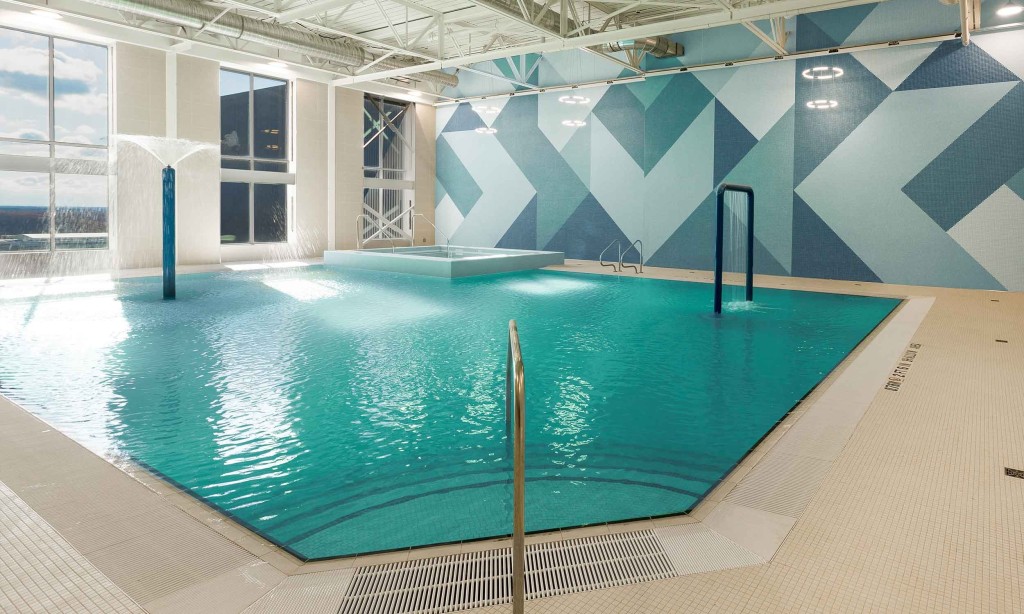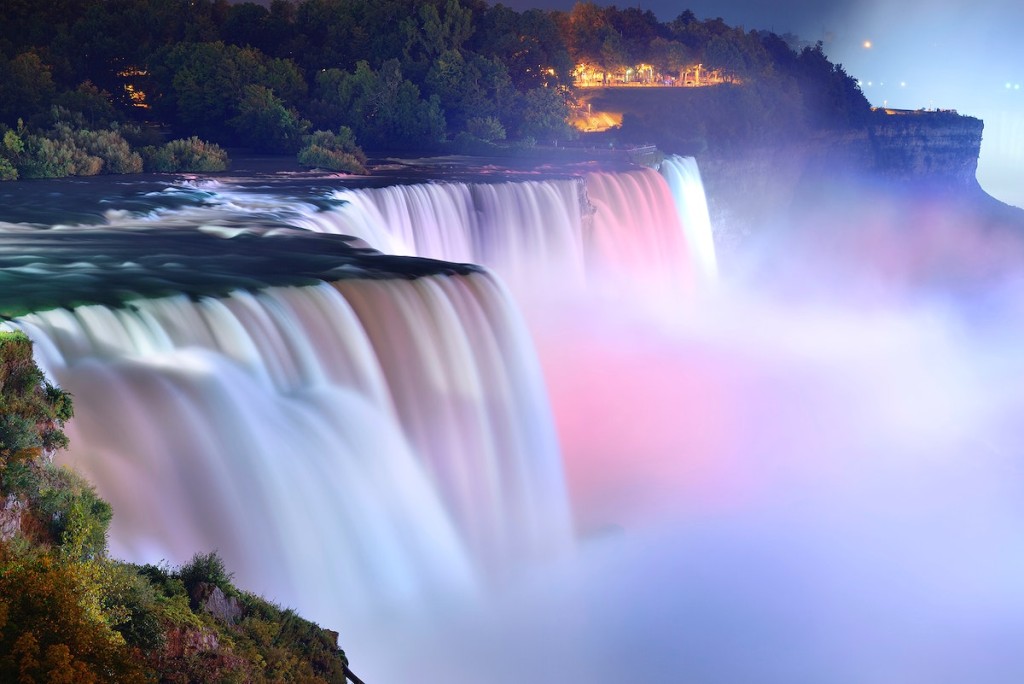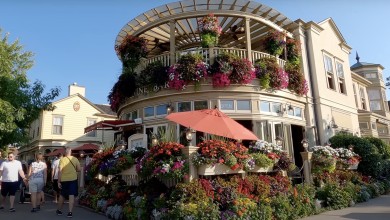
Niagara Falls, a captivating natural attraction that spans two countries, the U.S. and Canada, is composed of three distinct falls: Horseshoe Falls, American Falls, and Bridal Veil Falls. Many believe it to be the 8th Wonder of the World. Located along the banks of the Niagara River, this destination offers a mesmerizing experience for visitors seeking the thrill of witnessing its majestic cascades.
However, some months are the least favorable times to visit Niagara Falls. In this article, we will explore the worst time to visit Niagara Falls so that you plan your journey at the right time.
Worst Time To Visit Niagara Falls
Winter months (December to February), when temperatures plummet between 8°C and -8°C, are the worst times to visit Niagara Falls. The bitter cold of winter brings with it a host of challenges and inconveniences.

Firstly, you’ll find yourself burdened with the need to pack extra layers and heavy winter gear to shield yourself from freezing temperatures. Carrying around all this additional luggage can be cumbersome and restrict your mobility during your visit.
Moreover, the icy grip of winter increases the likelihood of falling ill. With fluctuating weather conditions and the prevalence of common colds and flu, the risk of contracting minor illnesses is higher. Falling sick during your trip can not only ruin your experience but also lead to missed opportunities and unfulfilled expectations.
Additionally, heavy snowfalls in the winter season often result in road closures and limited access to various attractions and viewpoints. Many roads and places around the falls are closed off due to safety concerns, making it difficult to explore and fully appreciate the beauty of Niagara Falls.
Lastly, the slower-paced city life during winter can create a sense of isolation. With fewer tourists and limited activities, the atmosphere often lacks the vibrant energy and liveliness that Niagara Falls is known for. This can detract from the overall experience and leave visitors feeling somewhat disheartened.
Additional Challenges: Worst Time To Visit Niagara Falls
There are numerous other reasons that will convince you to steer clear of the winter months. Let’s explore them below:
Snowstorms
Winter months, specifically from December to March, in Niagara Falls are notorious for snowstorms. These storms bring about hazardous conditions that can make your visit to the falls the worst. As reported by various news outlets, including BBC, a massive winter storm dubbed the “Blizzard of the Century” swept over the US and Canada, leaving its mark in the falls in December 2022.

Another significant snow event was the “Snowvember” storm that struck in November 2014. This storm brought heavy snowfall and caused widespread power outages and affected many areas around Niagara falls.
Snowstorms bring numerous hazardous conditions that can jeopardize the safety and well-being of visitors. Heavy snowfall can lead to slippery and treacherous pathways which can increase the risk of accidents and injuries. The limited visibility caused by swirling snow can hinder your ability to appreciate the falls’ beauty and capture memorable moments.
Closing pools
During the transition from summer to fall, pool owners in the Niagara Falls region begin the process of closing their pools. This means that there is a higher chance of pools being closed during winter. Pool closures during your visit can impact your trip in various ways.

Firstly, the absence of open pools means you won’t have the chance to enjoy swimming or water-based activities. This can be disappointing if you were looking forward to aquatic relaxation and fun.
Moreover, the closure of pools can affect the overall ambiance of hotels and resorts. Without open pools, the atmosphere may feel less vibrant and dynamic diminishing your overall experience.
Additionally, pool closures indicate the shift towards winter, resulting in cooler temperatures and a decrease in outdoor activities. This reduction in available amenities and recreational options can affect your ability to fully enjoy your visit to Niagara Falls.
Suggested Reading: 12 Restaurants In Niagara-on-the-Lake With A Scenic View
Closed Attraction
During the winter months, there are several attractions around Niagara Falls that are closed, limiting the range of places you can visit. Iconic experiences such as Niagara City Cruises, Hornblower Cruises, White Water Park, and the Whirlpool Aero Car on the Canadian side, as well as Maid of the Mist, are shut down for the season.

According to reports from Niagara Falls State Park, the Cave of the Winds experiences closures on specific dates. For instance:
- Thanksgiving (November 23): The Cave of the Winds is closed on Thanksgiving Day, preventing visitors from experiencing the awe-inspiring journey to the base of Bridal Veil Falls.
- Christmas Day (December 25): The attraction remains closed on Christmas Day, depriving visitors of the opportunity to witness the falls’ beauty during the holiday season.
- New Year’s Day (January 1): The Cave of the Winds is also closed on New Year’s Day, limiting access to one of the most captivating experiences at Niagara Falls.
These closures not only restrict your exploration but also limit the range of activities and sights available during your visit. So, plan your visit accordingly!
Limited Hours
During the winter months, some attractions at Niagara Falls may have limited hours or be closed altogether. This becomes more challenging due to the shorter daylight hours.

For example, on the winter solstice day, which falls on December 21st, the daylight hours are significantly reduced.
On this shortest day of the year, there are only 5 hours and 37 minutes of daylight available.
This means that visitors have a mere fraction of the day to explore the city and appreciate the beauty of the falls.
The limited daylight hours pose various challenges. With such a short window of time, it becomes difficult to cover all the attractions and take in the breathtaking views. Sightseeing activities, such as boat tours or hiking, may need to be rushed or even missed entirely due to the restricted time frame.
To ensure a worthwhile visit, it is important to plan accordingly and prioritize the attractions that are open during the limited hours.
Editor’s Pick: Worst Time To Visit Miami According to Locals & Experts
Off Season
During the winter months, a noticeable sense of lethargy settles over Niagara Falls, making it one of the worst times to visit. Specifically, December, January, and February should be approached with caution. As temperatures plummet and snow covers the landscape, the city’s vibrant energy fades away.
The streets and roadways that were once teeming with tourists during the peak summer season become sparsely populated. The lively hustle and bustle of the mornings give way to a quiet stillness. Afternoons lose their vibrancy, and the evenings no longer carry the same lively ambiance.
Without the crowds and events that define the warmer months, the overall Niagara Falls experience is dampened during winter. The absence of bustling activity and a vibrant atmosphere can leave visitors feeling underwhelmed and less immersed in the destination’s unique charm.
Experts Pick: Ultimate Adventure Bucket List for Ontario CA
When Niagara Falls is Expensive and Crowded?
June, July, and early August are the peak season at Niagara Falls. As a result, you should expect crowds followed by a significant price hike in terms of lodging. The weather during this time is ideal for enjoying the refreshing mist of the falls. However, the large number of vacationers creates unpleasant crowds.

As you navigate through the throngs of people, you may find it challenging to get close enough to the falls to truly experience the cool water on your skin. Additionally, the summer months bring extremely hot and humid temperatures which will further add to the discomfort of being in crowded spaces.
Waiting in line to see the falls or to experience the attractions at Niagara Falls State Park can become a sticky and unpleasant experience. The high demand during peak season can lead to long queues and limited availability for various activities.
If you decide to brave the sticky weather and large crowds during the summer months, it is best to book lodging, travel, and tickets in advance. Last-minute deals are rare, so it’s wise to plan ahead for a smooth and enjoyable trip.
Related: Worst Time to Visit Colorado According to Locals and Experts
Month-by-Month Analysis: Worst Time to Visit Niagara Falls
Have plans for visiting Niagara Falls soon? Follow this month-by-month guide to help you plan your trip for any month.
January (Worst Time to Visit Niagara Falls)
- Temperatures: Average high of 0°C (32°F) and an average low of -6°C (21°F).
- Weather: Cold and snowy, with potential for icy conditions.
- Activities: Indoor attractions like Butterfly Conservatory, Bird Kingdom, and Niagara Falls History Museum. Ice skating at the outdoor rinks.
- Special Events: Niagara Icewine Festival celebrates the region’s renowned icewine.
- Crowd Level: Low; fewer tourists due to the chilly weather.
February
- Temperatures: Average high of 0°C (32°F) and an average low of -7°C (19°F).
- Weather: Similar to January, cold with potential snowfall.
- Activities: Indoor activities continue, along with winter hiking and enjoying hot springs.
- Special Events: Winter Festival of Lights, a dazzling light display throughout the city.
- Crowd Level: Low; still a quieter time for tourism.
March
- Temperatures: Average high of 5°C (41°F) and an average low of -3°C (27°F).
- Weather: Transitioning to milder weather, occasional rainfall.
- Activities: Helicopter tours begin, and some outdoor attractions reopen.
- Special Events: Niagara Maple Syrup Festival celebrates the region’s maple syrup harvest.
- Crowd Level: Low to moderate; tourist numbers start increasing as spring approaches.
April
- Temperatures: Average high of 12°C (54°F) and an average low of 1°C (34°F).
- Weather: Springtime weather with occasional showers.
- Activities: More outdoor attractions open, including hiking and biking trails.
- Special Events: None notable in April.
- Crowd Level: Moderate; increasing number of tourists compared to the previous months.
May
- Temperatures: Average high of 19°C (66°F) and an average low of 8°C (46°F).
- Weather: Pleasant spring weather with blossoming foliage.
- Activities: Boat tours (e.g., Maid of the Mist) typically start in May. Explore botanical gardens.
- Special Events: Niagara Falls Elvis Festival attracts fans of “The King”.
- Crowd Level: Moderate to high; May marks the beginning of peak tourist season.
June
- Temperatures: Average high of 25°C (77°F) and an average low of 14°C (57°F).
- Weather: Warm and comfortable for outdoor activities.
- Activities: Hiking, zip-lining, and jet boat tours become popular.
- Special Events: Niagara Falls International Marathon.
- Crowd Level: High; summer tourists arrive, leading to increased crowds.
July (Most Crowded Time to Visit Niagara Falls)
- Temperatures: Average high of 28°C (82°F) and an average low of 17°C (63°F).
- Weather: Warm summer days, great for outdoor adventures.
- Activities: Fireworks displays at night, enjoy the Hornblower Niagara Cruises.
- Special Events: Canada Day celebrations (July 1st).
- Crowd Level: Very high; peak summer season, expect large crowds.
August
- Temperatures: Average high of 27°C (81°F) and an average low of 17°C (63°F).
- Weather: Similar to July, warm and ideal for outdoor activities.
- Activities: Zipline, Whirlpool Aero Car, and relaxing in the parks.
- Special Events: Niagara Food Festival.
- Crowd Level: High; still peak tourist season, but slightly less crowded than July.
September
- Temperatures: Average high of 23°C (73°F) and an average low of 13°C (55°F).
- Weather: Mild and pleasant, the beginning of the fall season.
- Activities: Enjoy the fall foliage, wine tours in the nearby vineyards.
- Special Events: Niagara Grape and Wine Festival celebrates the harvest.
- Crowd Level: Moderate; fewer tourists than peak summer months.
October
- Temperatures: Average high of 16°C (61°F) and an average low of 7°C (45°F).
- Weather: Crisp and cool, with colorful autumn leaves.
- Activities: Scenic drives, hiking, and haunted attractions for Halloween.
- Special Events: Niagara Falls Oktoberfest.
- Crowd Level: Moderate to high; fall foliage attracts visitors, but not as crowded as summer.
November
- Temperatures: Average high of 9°C (48°F) and an average low of 1°C (34°F).
- Weather: Cooler temperatures and occasional rain.
- Activities: Indoor attractions and shopping for holiday gifts.
- Special Events: Winter Festival of Lights begins (runs through January).
- Crowd Level: Moderate; tourist numbers decrease as winter approaches.
December
- Temperatures: Average high of 3°C (37°F) and an average low of -3°C (27°F).
- Weather: Cold with potential snowfall, festive atmosphere.
- Activities: Enjoy the Winter Festival of Lights, visit Christmas markets.
- Special Events: New Year’s Eve celebrations.
- Crowd Level: Moderate; tourists visit for the holiday season, but not as crowded as summer.
Final Words
Niagara Falls is no less than a representation of heaven on Earth. However, not every season is the right one to visit this amazing place. By avoiding the extreme winters as well as the peak tourist season, you can enjoy the most at this place. We hope that you have a safe and enjoyable trip. Be sure to read our guide on the worst time to visit New York as well!
Worst Time to Visit Niagara Falls - FAQs
The worst time to visit Niagara Falls in terms of weather is during the winter months, especially January and February. The temperatures can be bitterly cold, with average lows below freezing and the potential for icy conditions, making outdoor activities uncomfortable and hazardous.
The peak tourist season during the summer months, particularly July and August, should be avoided if you prefer to steer clear of large crowds.
The months of April and May are known for higher chances of rainfall at Niagara Falls. While the weather is generally milder, these showers can impact outdoor activities and reduce visibility of the falls, affecting the overall experience.


